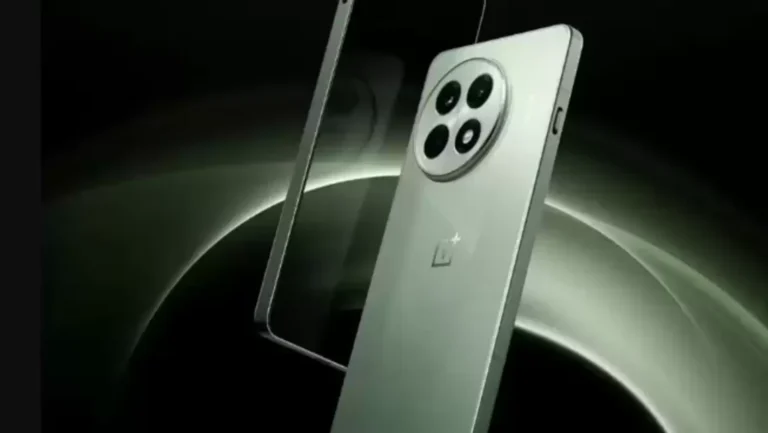
NVIDIA’s upcoming GeForce RTX 5090, built on the cutting-edge Blackwell architecture, is shaping up to be the crown jewel of the RTX 50 series. With unprecedented performance improvements, massive VRAM upgrades, and a design tailored for next-gen gaming and content creation, the RTX 5090 looks set to be the GPU to beat. Here’s everything we know about NVIDIA’s next-gen flagship—performance, specs, pricing, and expected release.
GeForce RTX 5090: A Glimpse Into the Future of Graphics
NVIDIA’s RTX 5090 is poised to redefine what is possible in consumer graphics cards. Building on the success of the Ada Lovelace-based RTX 4090, this new flagship will feature groundbreaking advancements thanks to the Blackwell architecture. Whether you’re a hardcore gamer, a content creator, or a professional looking for raw power, the RTX 5090 promises to deliver unparalleled performance.
As rumors and leaks flood the web, NVIDIA is making it clear that this GPU will push the boundaries of graphical fidelity and computational performance, easily positioning itself as the fastest out-of-box graphics solution available.
GeForce RTX 5090 Specifications: More Power, More Memory
When it comes to specs, the GeForce RTX 5090 is an absolute powerhouse. Here’s what we can expect based on the latest leaks:
- Architecture: Blackwell
- GPU Core: GB202-300-A1
- CUDA Cores: 21,760
- Streaming Multiprocessors (SM): 170 (out of a possible 192)
- Clock Speed: Base 2900 MHz (an impressive 30% increase over RTX 4090)
- VRAM: 32 GB GDDR7
- Memory Speed: 28 Gbps
- Memory Bus Width: 512-bit
- Memory Bandwidth: 1792 GB/s
- TDP (Total Board Power): 600W (up from 450W on the RTX 4090)
- Power Connector: 12V-2×6 (16-pin)
- Ray Tracing (RT) Cores & Tensor Cores: To be confirmed, but major improvements expected
The RTX 5090 will also utilize a 512-bit memory interface, a huge leap compared to the 384-bit interface on the RTX 4090, enabling astronomical memory bandwidth of 1792 GB/s—more than double that of the RTX 4090.
What does this mean for users? Expect supercharged performance, particularly in demanding 4K and 8K gaming, as well as content creation tasks like 3D rendering and AI-enhanced workflows. Whether you’re rendering massive datasets or enjoying high-fidelity gaming, the RTX 5090 is likely to handle it all with ease.
RTX 5090 vs RTX 4090: A Generational Leap
When comparing the RTX 5090 to its predecessor, the RTX 4090, the difference is clear. The RTX 5090 comes with significant upgrades in almost every area:
| Specification | GeForce RTX 5090 | GeForce RTX 4090 |
|---|---|---|
| Architecture | Blackwell | Ada Lovelace |
| Process Node | 4NP (TSMC’s 5nm) | 4N (TSMC’s 5nm) |
| GPU Core | GB202-300-A1 | AD102-300 |
| CUDA Cores | 21,760 | 16,384 |
| Streaming Multiprocessors | 170 | 128 |
| Clock Speed | 2900 MHz | 2235 MHz |
| VRAM | 32 GB GDDR7 | 24 GB GDDR6X |
| Memory Speed | 28 Gbps | 21 Gbps |
| Memory Bandwidth | 1792 GB/s | 1008 GB/s |
| TDP | 600W | 450W |
| Power Connector | 12V-2×6 (16-pin) | 12VHPWR (16-pin) |
From the increased CUDA core count to the jump in VRAM capacity (32 GB GDDR7), the RTX 5090 is set to be the undisputed leader in the high-end consumer GPU space. Expect a performance boost of over 10%, and with advanced upscaling technologies like DLSS, 8K gaming should be more accessible than ever.
RTX 5090 Performance: Ready for 8K Gaming & Beyond
With 2900 MHz base clocks and 28 Gbps GDDR7 memory, the RTX 5090 will likely offer an outstanding gaming experience at resolutions ranging from 4K to 8K. If you’ve been dreaming of seamless high-fidelity gaming at ultra-high resolutions, this GPU is designed to make it a reality.
On top of that, with DisplayPort 2.1 support and the usual array of NVIDIA-exclusive features like DLSS 3.0 and Ray Tracing, the RTX 5090 will bring immersive, smooth, and incredibly detailed visuals even in the most demanding titles.
Expect the RTX 5090 to also be a beast for AI and machine learning tasks, handling datasets and simulations with incredible efficiency. If you’re a creator, you’ll find that the extra VRAM and bandwidth will dramatically improve performance for tasks like video editing, 3D rendering, and content creation.
GeForce RTX 5090 Pricing & Expected Launch
While official pricing remains TBD, we can make some educated guesses based on the RTX 4090’s MSRP of $1,599. Given the massive spec bump, the RTX 5090 will likely retail between $1,800 – $2,000, making it a premium option for enthusiasts, creators, and professionals.
As for availability, the RTX 5090 is expected to be unveiled at CES 2025, with high demand likely to lead to limited availability through the first few months. If history repeats itself, expect a smooth supply ramp-up post-Q1 2025.
The Road Ahead: NVIDIA’s Flagship Revolution
The RTX 5090 is shaping up to be one of the most exciting GPU releases in recent memory. With massive performance gains, an increase in VRAM and bandwidth, and support for the latest gaming technologies, it’s no surprise that this GPU is being hailed as the holy grail for enthusiasts. Whether you’re upgrading from an older model or diving into the world of 4K/8K gaming for the first time, the RTX 5090 is bound to deliver a premium experience for years to come.
What do you think of NVIDIA’s upcoming flagship? Let us know in the comments below!


